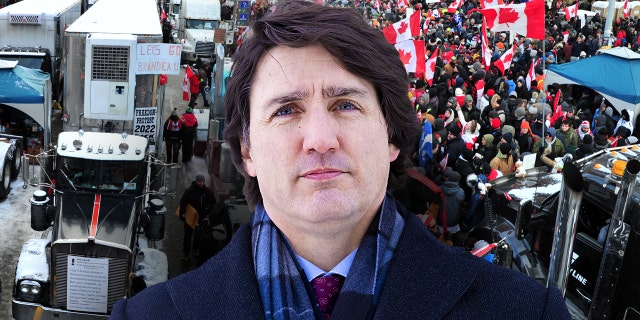https://55257ed65db9cb0fac554784fa339d69.safeframe.googlesyndication.com/safeframe/1-0-38/html/container.html
APRIL 25
Canada’s main stock index hit a two-month low on Monday, dragged down by energy and material stocks, as worries about the fallout from China’s COVID-19 outbreak knocked oil and metal prices lower.
At 09:30 a.m. ET, the Toronto Stock Exchange’s S&P/TSX composite index was down 287.21 points, or 1.36%, at 20,899.17.
Wall Street’s main indexes opened lower on Monday as fears over China’s COVID-19 outbreaks spooked investors already concerned about aggressive U.S. interest rate hikes.
The Dow Jones Industrial Average fell 79.75 points, or 0.24%, at the open to 33,731.65.
The S&P 500 opened lower by 16.44 points, or 0.38%, at 4,255.34, while the Nasdaq Composite dropped 90.12 points, or 0.70%, to 12,749.17 at the opening bell.
The worries reverberated across world markets, with Chinese shares marking their biggest slump since a pandemic-led selling in February 2020 and European stocks falling to their lowest in over a month on fears of strict restrictions in China.
“China lockdowns are getting worse. It slows general economic growth and also creates supply chain issues that will continue to make inflation bad and lower earnings growth in the United States,” said Christopher Grisanti, chief equity strategist at MAI Capital Management in New York.
“I don’t think we’ve seen the bottom yet. We haven’t had that big sell off yet where we have huge volume and huge down side.”
The CBOE Volatility index, known as Wall Street’s fear gauge, hit its highest level since mid-March of 29.76.
Investors were also on edge at the start of a week that will see megacap companies like Google-parent Alphabet Inc, Microsoft Corp, Amazon.com Inc and Apple Inc publish quarterly results.
STORY CONTINUES BELOW ADVERTISEMENT
Disappointing results from pandemic darling Netflix along with surging bond yields pummeled high-growth stocks last week, bringing year-to-date losses in the tech-heavy Nasdaq to 17.9%. Meanwhile, the benchmark S&P 500 is down 10.4% so far this year.
Traders are pricing in big moves by the Federal Reserve this year to control inflation after a series of hawkish remarks from policymakers. Fed Chair Jerome Powell last week gave a “go” sign to a half-point rate hike in May and signaled he would be open to “front-end loading” the U.S. central bank’s retreat from super-easy monetary policy.
Money markets expect the Fed to raise interest rates by a half point at the central bank’s next two meetings.
Twitter Inc jumped 4% in early trading after sources told Reuters it was set to accept Tesla Inc chief Elon Musk’s ‘best and final’ offer of $54.20 per share in cash.
Asian markets had suffered their worst day in over a month overnight on fears that Beijing was about to go back into a COVID-19 lockdown.
The bashing continued in Europe. Despite relief that Macron had eased past far-right challenger Marine Le Pen on Sunday, the STOXX 600 index fell back to mid-March lows, weighed down by 1.5% and 1.0% drops in French and German shares, respectively.
The euro slid as much 0.75% as well, to its lowest since the initial COVID panic of March 2020.
“The reality is there is more to the French election story than Macron’s win yesterday,” said Rabobank FX strategist Jane Foley.
Not only are there parliamentary elections still to come in France in June, but Macron also seems likely to keep the pressure up for a Europe-wide ban on Russian oil and gas imports, which would cause serious economic pain, at least in the short term.
“We had German officials saying last week that if there was an immediate embargo of Russian energy then it would cause a recession in Germany. And if there was a recession in Germany, that would drag the rest of Europe down and have knock-on effects for the rest of the world,” Foley said.
MSCI’s broadest index of world shares was down 0.7% to a six-week low. Oil fell over 4% and the Beijing worries saw the yuan skid to a one-year low.
State television in China had reported that residents were ordered not to leave Beijing’s Chaoyang district after a few dozen COVID cases were detected over the weekend.
The China-sensitive Australian dollar fell as much as 1.2% while the U.S. dollar climbed unhindered to a two-year high, hitting $1.0707 against the euro and 1.2750 versus Britain’s pound in the process.
Much focus on is on how fast and far the Federal Reserve will raise U.S. interest rates this year and whether that, along with all the other current global strains, will help tip the world economy into recession.
This week is also a packed one for corporate earnings. Almost 180 S&P 500 index firms are due to report. Big U.S. tech will be the highlight, with Microsoft and Google on Tuesday, Facebook on Wednesday and Apple and Amazon on Thursday.
In Europe, 134 of the Stoxx 600 will also put out results, including banks HSBC, UBS and Santander on Tuesday, Credit Suisse on Wednesday, Barclays on Thursday and NatWest and Spain’s BBVA on Friday.
“I wonder whether just meeting expectations will be enough, it just feels like maybe we’ll need a bit more,” said Rob Carnell, ING’s chief economist in Asia, referring to jitters about big tech following a dire report from Netflix last week.
“It’s guidance about the future which will be as important as anything and I suspect most of these firms are going to be coming out and saying it all looks rather uncertain, which I don’t think is going to really help.”
Monday’s earlier selloff in Asia also saw Hong Kong’s Hang Seng fall 3.7% and the Shanghai composite index slide over 5%.
China’s central bank had fixed the mid-point of the yuan’s trading band at its lowest level in eight months, seen as an official nod for the currency’s recent slide, and the yuan was sold further, to a one-year low of 6.5092 per dollar.
Metals were mangled too. Dalian iron ore fell more than 9%. Copper, a bellwether for economic growth, dropped 2.2% and Brent crude futures fell 4.5% to a two-week low of $101.78 a barrel.
Palm oil whipsawed and the Indonesian rupiah slid following a ban on exports from Indonesia that further stoked worldwide food price pressure.
The higher dollar pushed spot gold 0.8% lower to $1,913 an ounce. Cryptocurrency Bitcoin dropped to a six-week low of $38,202.
The bond markets got some relief at least. The benchmark 10-year yield was back at 2.8217% in early U.S. trading while Germany’s 10-year yield, the benchmark for Europe , dipped as far as 0.87%. France’s 10-year yield was also down around 7 basis points at 1.35%.
Money markets are now pricing in a 1 percentage point increase in U.S interest rates at the Federal Reserve’s next two meetings and at least 2.5 points for the year as a whole, which would be one of the biggest annual increases ever seen.
This week will also see the release of U.S. growth data, European inflation figures and a Bank of Japan policy meeting, which will be watched for any hints of a response to a sharp fall in the yen, which has lost 10% in about two months.
Reuters


